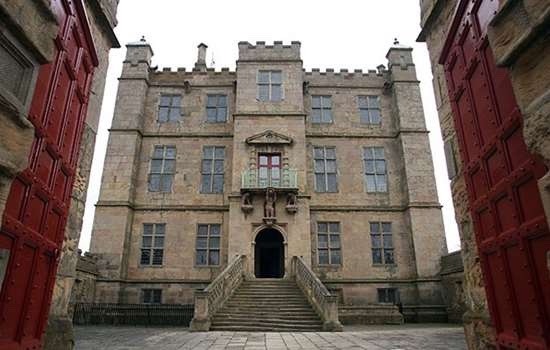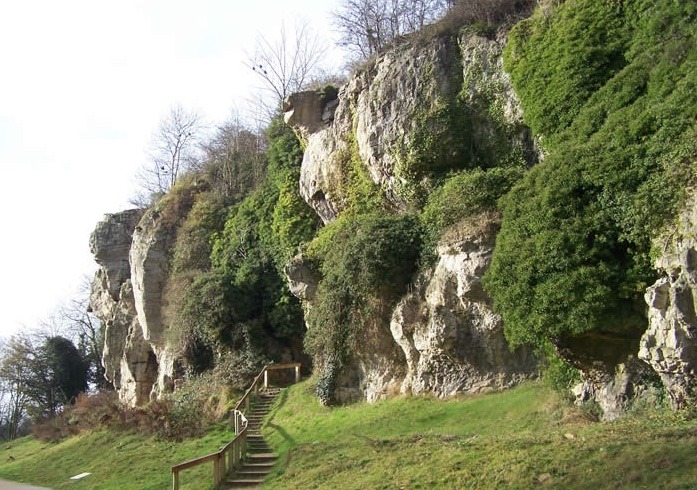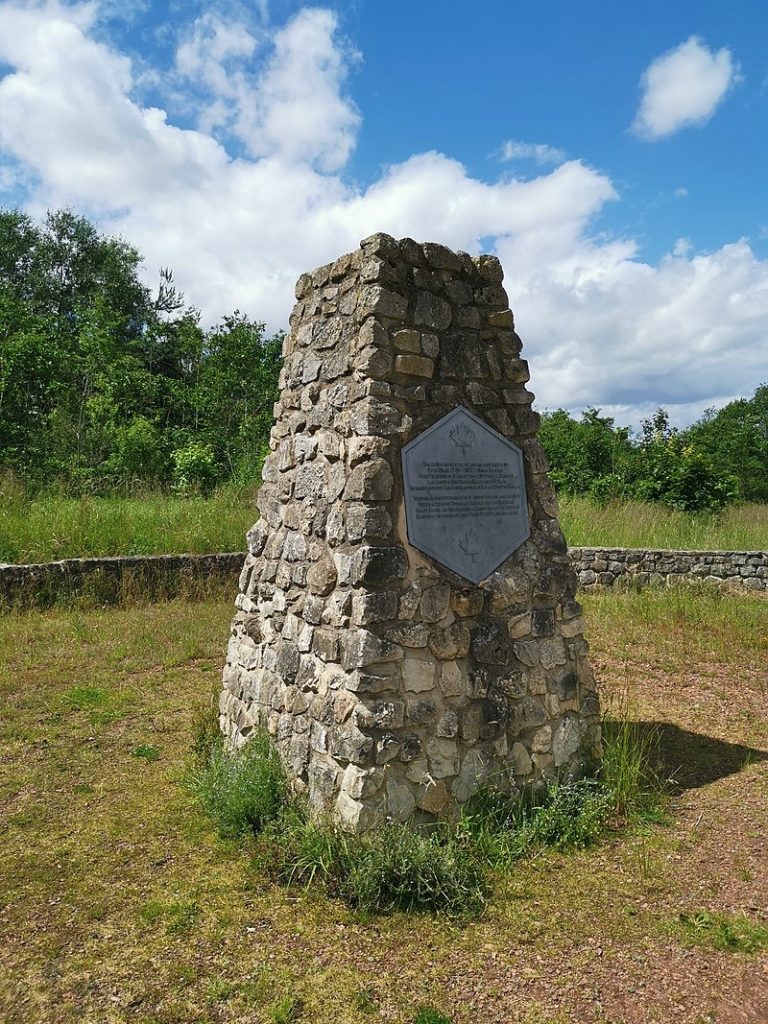At the Club’s Zoom meeting on 28 April, Past President and local Councillor Geoff Davis gave an entertaining and very informative talk highlighting 25 random and unconnected little known facts about the town.
Geoff started with the historical roots of the town. So, what do Bolsover Castle, Peveril Castle, Nottingham Castle, Codnor Castle, Langar Hall, Pinxton, Duston, Glapwell and Eastwood have in common?
The answer is that they were all component parts of the Honour of Peverel (including 80 manors in the north of Derbyshire), which was granted to William Peveril (c. 1050 – c. 1115) in 1066, by William the Conquerer. It is recorded in the Domesday Book in 1086.
William Peverel’s son, William Peverel the Younger, inherited the honour, but, accused of treason in 1153 by King Henry II, forfeited it, and the king then passed it to Ranulph de Gernon, 2nd Earl of Chester, who died before he could take possession.
Incidentally, the story of the Peverels formed the background to the historical novel Peveril of the Peak (1823) which is the longest novel by Sir Walter Scott. Along with Ivanhoe, Kenilworth, and Woodstock this is one of the English novels in the Waverley novels series, with the main action taking place around 1678 in the Peak District, the Isle of Man, and London

Bolsover Castle fell into disrepair, until its ruins provided the setting for the “Little Castle”, begun in 1612 by Sir Charles Cavendish as a retreat from his principal seat at Welbeck, a few miles away.
Picture of the Little Castle courtesy of English Heritage.

Next, Geoff discussed the geology of the area, focussing on the Magnesian Limestone, and the creation of Bolsover Hill and Creswell Crags through erosion of the plateau. Creswell Crags was inhabited as long as 43,000 years ago. The Neanderthals arrived first, occupying the site until around 40,000 years ago. They made hand axes and scrapers from flint, quartzite and clay-ironstone to help them survive on the Ice Age grasslands. Homo sapiens came later and used the cave from around 22,000 years ago until the end of the Ice Age and beyond. They left a wide range of tools and butchered animal bone, as well as an image of a horse’s head that had been intricately engraved on a piece of horse rib bone.
Picture of Pin Hole, courtesy of Creswell Crags

Geoff’s agenda then turned to Peter Fidler (16 August 1769 – 17 December 1822) who was a surveyor in the employ of the Hudson’s Bay Company (HBC) in what later became Canada. He was born in Bolsover, and died at Fort Dauphin in present-day Manitoba . He married Mary Mackagonne, a Cree woman, and together they had 14 children.
The Peter Fidler Reserve is situated on the former Bolsover South Tip. The tip has been transformed by Derbyshire County Council and contains a number of valuable habitats, including willow carr, reed bed, river corridor and grassland. Sensitive reclamation works have protected these habitats and created new ponds, woodland and meadows
Picture of the Peter Fidler monument in Bolsover by Andy Plummer
In the summer you can see Dragonflies on the wing in the Peter Fidler Reserve. You will see Emperor, Brown Hawker, Common Darter and Southern Hawker with Common and Blue Tailed Damselflies. These flying jewels are following in the footsteps of their illustrious ancestors discovered as fossils at Bolsover Pit in 1978 that lived 300,000,000 years ago. The first one was a new species with a 20 cm wingspan and created quite a stir both locally and nationally. A second find in the pit that year proved to be the largest fossil insect, named by the British Museum in 1980 as Typhus ailuculum (Giant Dragonfly of the Dawn) with a wingspan of 50 cm. The largest Dragonfly wingspan you will see now is the 10.6 cm of the Emperor.
The site has been dedicated to the memory of Peter Fidler, who was born in 1769 at Mill Farm, adjacent to Bolsover Tip South.
The magnesian limestone plateau and Peter Fidler are linked by the River Doe Lea.The Doe Lea springs in Tibshelf, and delivered power to 3 mills – Stainsby (adjacent to the National Trust site at Hardwick), Manor and on Mill Farm, where Fidler was born.

Geoff has strong connections to coal mining in the area, and talked about the development of mining in and around Bolsover. The Bolsover Colliery Company was founded in 1889 by Emerson Muschamp Bainbridge, a Northumberland born mine owner, who secured a lease from the Duke of Portland for land at Bolsover in Derbyshire and started shaft sinking to reach the coal in 1891. At that time, the Duke received 1 shilling (5p) for each ton of coal extracted – the miner who extracted it got 1 penny (0.5p).
Emerson Muschamp Bainbridge (pictured) was also the instigator of the Model Village which was built in1896 to address the poor living conditions of the miners and their families.
Bainbridge Hall was an orphanage.
The remains of an ‘extremely rare’ Roman settlement- complete with graves, bronze coins, jewellery and pottery- have been unearthed on the site of a new housing development near Oxcroft Lane, in Bolsover. Pottery, jewellery, graves and coins dating back to the reign of Emporer Constantine the Great (c360AD) were unearthed at the site. The Oxcroft Estate was part of a 1936 land settlement of several hundred acres bought by Derbyshire County Council from the Duke of Devonshire to provide small holdings, but the exposed position proved unsuitable for horticulture.
In 1907 the Barking Power & Gas Company began extracting gas fromcoal, and in 1920 they set up a plant in Bolsover to expoit the local coal supply. By 1940 they were using 500 tons of coal per day to make Coalite fuel. In 1966, when Coalite introduced a computer, they built a whole new wing onto their offices to house the machine.

Finally, Geoff rounded off his talk with reference to a meeting at The Van Dyke Hotel on 5th December 1979, when a group of local men decided to start the Rotary Club of Bolsover, and the Charter, formally launching the Club, was granted in April 1980.
